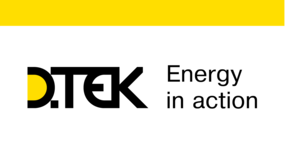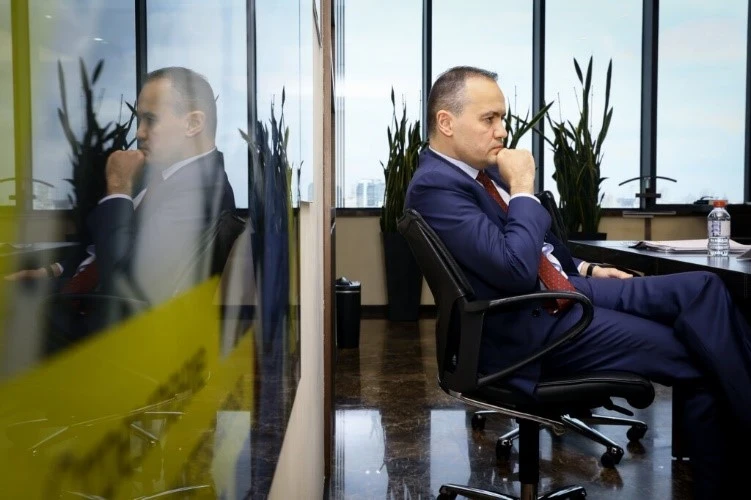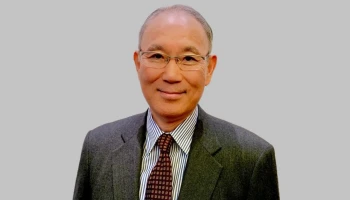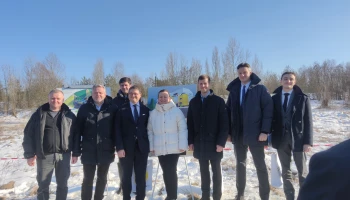Top-to-bottom crisis
The coronavirus shutdown that began on March 12 in Ukraine accelerated existing challenges for Akhmetov and DTEK.
As for DTEK, it is subdivided into six holding companies and part of Akhmetov’s System Capital Management conglomerate. With nearly $6 billion in revenue in 2018 and 71,000 employees in DTEK group, one of its six companies, DTEK Energy, is now busy trying to restructure $1.9 billion in debts after stopping payments to investors on Eurobond coupons in April.
The problems, Timchenko said, are a symptom of Ukraine’s dysfunctional energy markets in which some of the main government positions are held by inexperienced leaders and in which regulators, he said, have mandated tariffs below the cost of production while keeping a complicated array of subsidies that retard the market.
The circumstances have created a cascade of unpaid debts among producers and consumers while keeping the sector starved of the billions of dollars in yearly investments needed for infrastructure development and exploration.
Fighting ‘manipulations, myths’
While Akhmetov installed Timchenko 15 years ago to establish Western standards of professionalism, openness, and transparency in his companies, the owner remains secretive. He rarely if ever gives interviews. Public sightings of him are practically non-existent. He is faulted for being incurably tone-deaf, or simply indifferent, to how his actions go over in a poor country.
“Unfortunately, the reputation of this company is not so much dependent on its practices or its internal life. It’s very open, formulated by other stakeholders,” Timchenko said. “And unfortunately, I spend a lot of my personal time fighting these manipulations, these myths about our behavior.”
A sector in crisis
While he finds himself defending a boss to whom he is deeply loyal, his main job is to run Ukraine’s largest private energy holding and a top electricity producer. DTEK’s assets are dominant in private coal and thermal power generation, while also being extensive in oil and natural gas production, electricity distribution and in renewable energy.
And wherever one looks, he said, the energy sector is in trouble.
“It’s not the crisis of DTEK,” said Timchenko. “If you ask nuclear, renewables, coal – everybody says ‘guys, we’re in a very, very bad situation right now.’”
Timchenko is right. Ukrainian energy currently faces weak demand and high debts to and among energy producers. The producers, their industrial consumers, and government officials all say that something should be done. However, they don’t all agree on what.
Timchenko has joined talks with the Anti-Crisis Energy Headquarters, a group of industry and government leaders, led by Shmyhal, to bring the sector out of crisis.
Besides the shift that favored renewables and coal-produced electricity, DTEK has also supported easing price caps, a renewed ban on electricity imports from Russia and Belarus and other favorable shifts in government policy this year.
The energy ministry has cut nuclear output to new lows. Hydroelectric power is down as well, due to low river water levels caused by an unusually mild winter. Only green energy has not been cut. Coal sees some reduction but remains prominent in electrical generation.
The change, Timchenko said, is sensible and represents “a balanced approach” even if the public and some energy officials don’t understand all of the intricacies and may draw wrong conclusions.
“This is something that stays challenging for us how to explain in simple terms,” he said.
Nuclear power
Critics such as parliamentary energy committee head Andriy Gerus and others warn that the shift away from cheaper nuclear power will cause energy prices to rise for industrial consumers.
Timchenko said, however, that use of nuclear power had reached dangerously high levels amid falling demand.
“The share of nuclear energy is staying the same. Because of low consumption, you know that nuclear is very slow to decrease because of general level consumption and if you look at statistics for the last half-year, the share of nuclear was around 55-60 percent,” he said. “And the situation became so dangerous that, in some hours, the share of nuclear power was as much as 75%.”
“There were hours when they had to lower load by 30%,” Timchenko said. “So they’ve come to this situation where it’s dangerous because there’s no mass consumption and there is not enough hydro(-electric power) because of warm weather and not enough snow and hydro cannot produce a lot of electricity.”
Into the mix comes DTEK. “We provide flexibility,” he said, with coal-fired electricity.
Besides, he said, nuclear power is not so cheap after its hidden costs are taken into account.
The government’s Energoatom sets aside $30 million a year for decommissioning nuclear power units or $2 million annually for each of Ukraine’s 15 reactors. The price of decommissioning, which must start in 10 years with the aging fleet, is $500 million to $800 million per unit.
“It means that this part of the nuclear tariff is not part of the cost of production,” he said. Moreover, the government is not factoring in the ongoing costs of Chornobyl and other experts cite the long-term storage costs of nuclear waste.
“This is another manipulation, saying that we have very cheap nuclear power.”
Nonetheless, the sector is also in crisis, with Shmyhal noting that Energoatom is also forced to sell below production costs, prompting the Cabinet of Ministers to reduce the sector’s mandatory sales to the state’s Guaranteed Buyer.
Future is in renewables
While Timchenko thinks polluting coal-fired plants will be needed for at least a decade in generating electricity, he said Ukraine’s future is in expanding the share of renewable energy.
“When we announced that we want to be a leader in decarbonization, it sounds strange when a coal company makes such a statement. But what’s more important is that it’s true,” he said. “The main power should be renewables. It’s without any doubt. Ukraine should go in this direction. It’s good what was done for the last few years. We have more than $10 billion in investments. It’s the first time we’ve had such big investments in generation capacity on an industrial scale. This is a good experience for investors on the market. Most investors in renewables are foreign investors. It’s in line with the trends and the path of the Europeans.”
DTEK, Timchenko noted, started investing in renewables in 2008, long before the government’s generous price guarantees, and has staked out “a consistent position” to build the sector. “We fulfilled our goal of building 1 gigawatt capacity,” he said, and are looking to add another 1 gigawatt.
“Again, now people are saying that DTEK is protecting renewables because we are a leader. Yes, we have 15% but not 75%, not 80%, of the renewable sector,” he said. “You should have long-term vision. If we make a stupid mistake and scare renewable investors today for the sake of 1 billion hryvnia ($370 million) or 2 billion hryvnia ($740 million) they get in reduction of tariff over the next 10 years, then they will kill the future of this sector.”
He acknowledges that the government promised higher prices for such energy than it can pay. While renewables produce 8% of Ukraine’s power, experts estimate its share now costs up to 25% of the money spent on energy.
“I fully accept that continuing building new farms with the current feed-in-tariff is unsustainable. We have to change the situation,” he said. “We publicly said this in May 2019, when new laws were discussed and approved to move to auctions. If we bring new auctions, we will lower tariffs.”
He said more than 50% of the cost of renewables is tied up in high financing costs for construction, not actual production of energy.
“What we see as a trend as a result of investment in renewables is a decrease in the cost of electricity production in European countries,” Timchenko said. “You make a huge investment at the beginning and then you pay not much for air and sun. I think that Ukraine should reach a situation like Germany today — 50-60% renewables. But first, we need a sustainable form of tariffs. And second, our system should be prepared to carry such a high volume of renewables and it means a lot of investment in transmission lines.”
For nearly a year, Ukraine’s political leaders have wrestled with the state’s guaranteed price. Cutting it too much risks scaring away investment in all sectors, not just renewable energy. Timchenko said proposed cuts of 20% or more are unacceptably high.
While Timchenko holds up Germany as a role model, about 43% of its energy production still comes from gas and coal, which Germany will only phase out by 2038. Timchenko was asked if Ukraine will face the same fate due to its poor infrastructure and lack of electrical storage.
“You’re right in saying that today, flexible power capacity to support such a volume of renewables needs coal,” he said. “How do we replace it? First, hydro… Second, we should bring incentives for investors to start investing in energy storage.” DTEK is investing in a pilot electricity storage center, which Timchenko hopes to scale up.
“I am convinced that this solution can be found without a sharp increase of tariffs for consumers and I hope that this package will be developed and presented to the public in May,” he said.
Coal’s future
Critics accused DTEK Energy of shutting down mines despite being profitable. Pavlograd Coal, DTEK Energy’s most significant coal asset, made a net income of Hr 6.7 billion ($250 million) in 2019, according to documents published in the media.
Timchenko responded that Pavlohrad Coal is profitable “on paper” and that the income was largely a result of the re-evaluation of the company’s debt portfolio. He added that with the Hr 7 billion ($260 million) unpaid debt of the former government enterprise Energorynok and a coal stock of 2.5 million tons, the company “has no profit in cash terms.”
Even amid the shutdown, he said, DTEK Energy continued to pay salaries to laid off miners, although at a 40% reduction, before re-starting the mine. But the situation remains fragile. “Yes, probably they will have demand for coal. But I have to pay salaries, I have to pay taxes, transportation, and I cannot pay when I have tariffs…below the cost of production.”
DTEK’s debts
Timchenko said DTEK Energy is trying to restructure $1.9 billion in debt, a process on May 5 that he estimated would take two or three months. The last time that the group needed debt restructuring was in 2014, the start of Russia’s war against Ukraine in the eastern Donbas.
“Unfortunately, we are in a position, mostly artificially created by decisions of the regulator and other decisions on the market where we cannot service our debt,” said Timchenko.
He is confident he and the company’s investors can reach an agreement.
“Everybody’s seen how we behaved in the difficult years after 2013, not like some other Ukrainian companies who did restructuring for 10 years and eventually did a ‘haircut’ of 40-50%,” meaning a reduction in investors’ assets. “In our story, we never did a ‘haircut,’ we always tried to be open in our position with investors and find a solution.”
Russian imports
Timchenko considers a ban on Russian and Belarusian electricity imports to be a matter of national security. Gerus controversially introduced them last year, but the government has since rescinded them. To allow Russia to export electricity to Ukraine for prices lower than they sell it in Russia is “strange in a situation where there’s overcapacity in Ukraine,” DTEK’s CEO said.
While DTEK favored a “competitive open market” that opened the possibility of imports of electricity as of July 1, 2019, trade “should be a two-way flow,” Timchenko said. “We never criticize imports from Slovakia, from Western countries. But it’s a different situation with Russia and Belarus because these guys are exporting electricity to our country and we ask why aren’t you allowing the import of Ukrainian electricity?”
An unavoidable exception, he said, is the import of anthracite coal from Russia because this type of fuel is found only in Russian-controlled territory areas of the Donbas. But eventually, he said, those imports would cease also.
“The best way is to have our own resources. It’s about national security, it’s about government policy, it’s about the position of local producers, it’s about taxes we pay,” he said. “This is a good indication of whether we are proponents of market reforms and import of electricity or not. And we are in support of them.”







